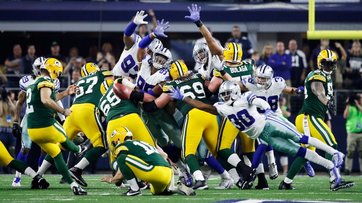
Last Sunday night one of the classic NFL (American Football) play off games took place between the Green Bay Packers and the Dallas Cowboys. The Green Bay Packers lead for most of the game but a last quarter comeback from the Cowboys saw them tie the game at 28 apiece with a little over 4 minutes left. The next drive from the Packers saw them retake the lead with a field goal only for the Cowboys to tie the game once again with their own field goal. At this point there were only 44 seconds left and the game was heading towards overtime. The next couple of plays and particularly the 36 yard pass from Aaron Rodgers to Jared Cook on a 3rd and 20 has already become the stuff of legend.
That play left Mason Crosby, the Green Bay Packers kicker, with a 51 yard field goal to win the game with the last play. However Jason Garrett, head coach of the Dallas Cowboys had one last option open to him. Just before the snap for the field goal he called a timeout, a tactic which is commonly referred to as ‘icing the kicker’. Because the timeout is called effectively simultaneously with the snap, the snap takes place and the kicker attempts the kick. Crosby made the first attempt quite easily but would have to do it again. Crosby stepped up to the plate however and made the second attempt albeit with a little less to spare as it flew just inside the left hand post.
The video also outlines reasons why a coach would employ this tactic when its success is debatable. Ultimately it comes down to the fact that the negative payoffs to the coach are weighted more heavily if they do not ice the kicker. One could use game theory terminology here and say that icing the kicker is a dominant strategy to coaches especially for important field goal attempts. Even if the kicker gets the kick having been iced, it is still a better outcome than not icing and the kicker being successful. There is one caveat to the last sentence. It is possible that the kicker, having being iced, misses the first kick but gets the second. If this were to happen often enough, I suspect icing would become employed less frequently.
 RSS Feed
RSS Feed